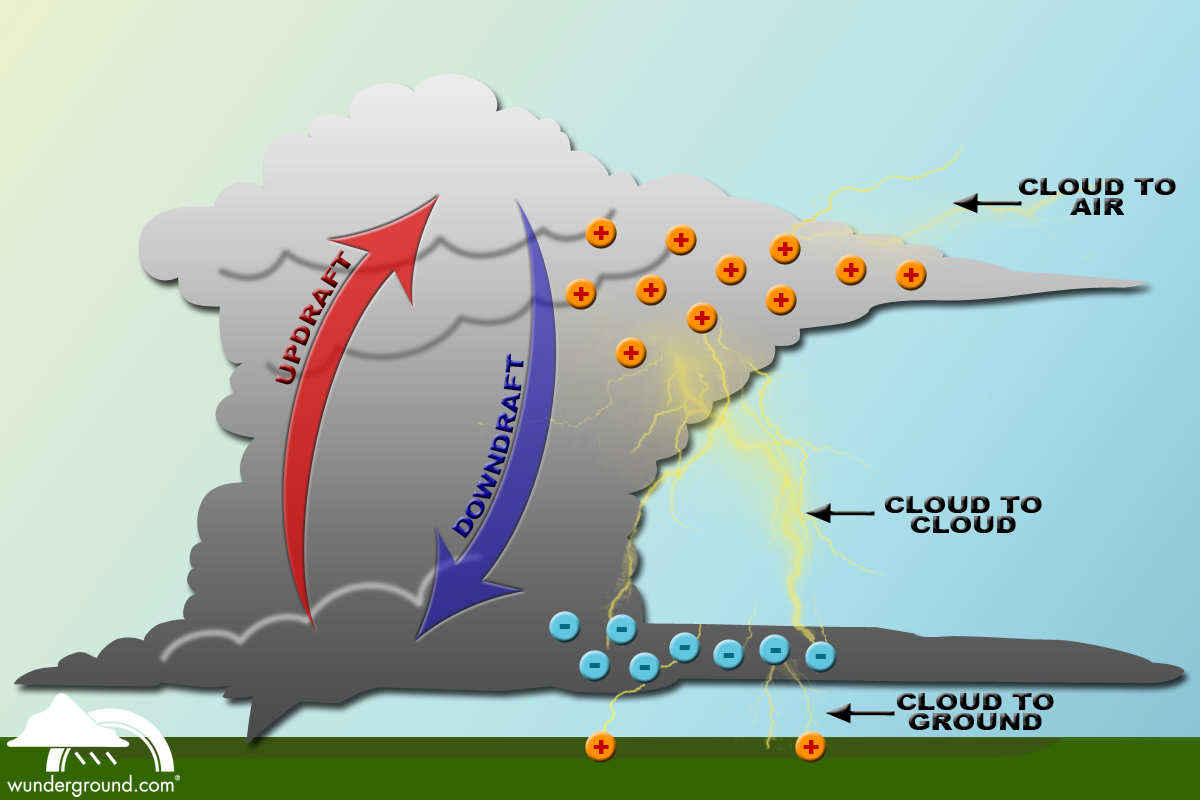LEARN ABOUT
Thunderstorms
A thunderstorm, also known as an electrical storm, lightning storm, or thundershower, is a storm characterized by the presence of lightning and its acoustic effect on the Earth's atmosphere, known as thunder.
Thunderstorms occur in association with a type of cloud known as a cumulonimbus. They are usually accompanied by strong winds, heavy rain, and sometimes snow, sleet, hail, or, in contrast, no precipitation at all. Thunderstorms may line up in a series or become a rain band, known as a squall line.
Strong or severe thunderstorms include some of the most dangerous weather phenomena, including large hail, strong winds, and tornadoes. Some of the most persistent severe thunderstorms, known as supercells, rotate as do cyclones.
While most thunderstorms move with the mean wind flow through the layer of the troposphere that they occupy, vertical wind shear sometimes causes a deviation in their course at a right angle to the wind shear direction.
I've explained some of these terms in the glossary, so you can click on each item and learn more about Lightning!
Unreal lightning from supercell thunderstorms in Tornado Alley, from South Texas to South Dakota, USA
Credit Stormchaser Pecos Hank
How lightning forms
Water and ice move around inside the cloud; forced up by warm air currents, down by gravity, and compressed in the cloud. Just as rubbing a balloon can create static electricity, the particles in the cloud become charged. It’s not clear how it happens, but charges separate in the cloud. Positive charges move up, and negatives move down.
Once a significant charge separation has built up, the positive and negative charges seek to reach each other an neutralise. ‘Streamers’ come up from the ground to form a pathway. Once a pathway is completed a spark forms, neutralizing the charge.
As the negative charge races down, the air surrounding it heats up.The spark is very hot at almost 20,000 degrees Celsius, and it rapidly heats the air to create a shock wave.
Considering light travels very fast – about 300 million metres per second, and that sound only travels at 300 metres per second; light is a million times faster than the sound produced. To find out how far away the storm is, you can count how long you hear the sound after the lightning. For every 4 seconds between the flash and the rumble, the thunderstorm is 1 mile away
GLOSSARY
+ LIGHTNING
Is an electric current. Within a thundercloud way up in the sky, many small bits of ice (frozen raindrops) bump into each other as they move around in the air. All of those collisions create an electric charge. After a while, the whole cloud fills up with electrical charges. After you see a flash of lightning, count the number of seconds until you hear the thunder. (Use the stop watch or count "One-Mississippi, Two-Mississippi, Three-Mississippi," etc.) For every 5 seconds the storm is one mile away. Divide the number of seconds you count by 5 to get the number of miles.
+ THUNDER
The loud thunder that follows the lightning bolt is commonly said to come from the bolt itself. However, the grumbles and growls we hear in thunderstorms actually come from the rapid expansion of the air surrounding the lightning bolt.
+ RAIN BAND / SQUALL LINE
A squall line is a line of thunderstorms forming along or ahead of a cold front. In the early 20th century, the term was used as a synonym for cold front. Strong straight-line winds can occur where the squall line is in the shape of a bow echo
+ BOW ECHO
A bow echo is shaped like an archer's bow. These systems can produce severe straight-line winds and occasionally tornadoes, causing major damage.
+ SUPERCELL
A large slow-moving area of up draught and downdraught which causes violent thunderstorms, heavy hail, and tornadoes.
+ WIND SHEER
Variation in wind velocity occurring along a direction at right angles to the wind's direction and tending to exert a turning force.
+ UPDRAFT AND DOWNDRAFT
The upward moving air in a thunderstorm is known as the updraft, while downward moving air is the downdraft.
+ CONVECTION CLOUDS
Clouds form when rising air, through expansion, cools to the point where some of the water vapor molecules "clump together" faster than they are torn apart by their thermal energy. Some of that (invisible) water vapor condenses to form (visible) cloud droplets or ice crystals.



